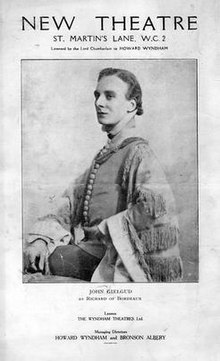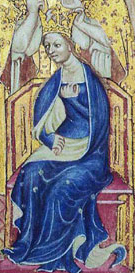
Anne of Bohemia, also known as Anne of Luxembourg, was Queen of England as the first wife of King Richard II. A member of the House of Luxembourg, she was the eldest daughter of Charles IV, Holy Roman Emperor and King of Bohemia, and Elizabeth of Pomerania. Her death at the age of 28 was believed to have been caused by plague.
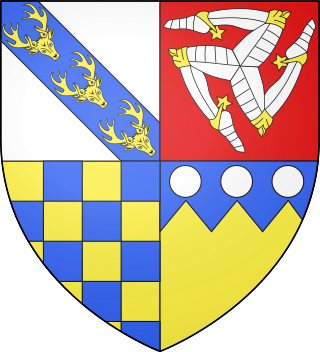
Thomas Stanley, 1st Earl of Derby, KG was an English nobleman. He was the stepfather of King Henry VII of England. He was the eldest son of Thomas Stanley, 1st Baron Stanley and Joan Goushill.

Elizabeth MacKintosh, known by the pen name Josephine Tey, was a Scottish author. Her novel The Daughter of Time, a detective work investigating the death of the Princes in the Tower, was chosen by the Crime Writers' Association in 1990 as the greatest crime novel of all time. Her first play Richard of Bordeaux, written under another pseudonym, Gordon Daviot, starred John Gielgud in its successful West End run.

Sir Arthur John Gielgud, was an English actor and theatre director whose career spanned eight decades. With Ralph Richardson and Laurence Olivier, he was one of the trinity of actors who dominated the British stage for much of the 20th century. A member of the Terry family theatrical dynasty, he gained his first paid acting work as a junior member of his cousin Phyllis Neilson-Terry's company in 1922. After studying at the Royal Academy of Dramatic Art (RADA), he worked in repertory theatre and in the West End before establishing himself at the Old Vic as an exponent of Shakespeare in 1929–31.
John Holland, 1st Duke of Exeter, 1st Earl of Huntingdon, KG, of Dartington Hall in Devon, was a half-brother of King Richard II (1377–1399), to whom he remained strongly loyal. He is primarily remembered for being suspected of assisting in the downfall of King Richard's uncle Thomas of Woodstock, 1st Duke of Gloucester (1355–1397) and then for conspiring against King Richard's first cousin and eventual deposer, Henry Bolingbroke, later King Henry IV (1399–1413).
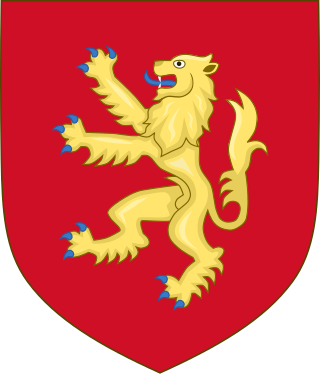
Richard Fitzalan, 4th Earl of Arundel, 9th Earl of Surrey, KG was an English medieval nobleman and military commander.
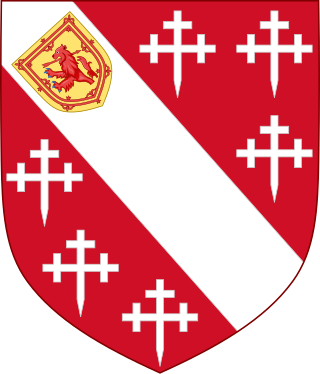
The Howard family is an English noble family founded by John Howard, who was created Duke of Norfolk by King Richard III of England in 1483. However, John was also the eldest grandson of the 1st Duke of the first creation. The Howards have been part of the peerage since the 15th century and remain both the Premier Dukes and Earls of the Realm in the Peerage of England, acting as Earl Marshal of England. After the English Reformation, many Howards remained steadfast in their Catholic faith as the most high-profile recusant family; two members, Philip Howard, 13th Earl of Arundel, and William Howard, 1st Viscount Stafford, are regarded as martyrs: a saint and a blessed respectively.

The Noël Coward Theatre, formerly known as the Albery Theatre, is a West End theatre in St. Martin's Lane in the City of Westminster, London. It opened on 12 March 1903 as the New Theatre and was built by Sir Charles Wyndham behind Wyndham's Theatre which was completed in 1899. The building was designed by the architect W. G. R. Sprague with an exterior in the classical style and an interior in the Rococo style.

The Lords Appellant were a group of nobles in the reign of King Richard II, who, in 1388, sought to impeach five of the King's favourites in order to restrain what was seen as tyrannical and capricious rule. The word appellant — still used in modern English by attorneys — simply means '[one who is] appealing'. It is the older (Norman) French form of the present participle of the verb appeler, the equivalent of the English 'to appeal'. The group was called the Lords Appellant because its members invoked a procedure under law to start prosecution of the King's unpopular favourites known as 'an appeal': the favourites were charged in a document called an "appeal of treason", a device borrowed from civil law which led to some procedural complications.

Richard III is a 1955 British Technicolor film adaptation of William Shakespeare's historical play of the same name, also incorporating elements from his Henry VI, Part 3. It was directed and produced by Laurence Olivier, who also played the lead role. Featuring many noted Shakespearean actors, including a quartet of knights, the film depicts Richard plotting and conspiring to grasp the throne from his brother King Edward IV, played by Sir Cedric Hardwicke. In the process, many are killed and betrayed, with Richard's evil leading to his own downfall. The prologue of the film states that history without its legends would be "a dry matter indeed", implicitly admitting to the artistic licence that Shakespeare applied to the events of the time.

Glencairn Alexander "Glen" Byam Shaw, was an English actor and theatre director, known for his dramatic productions in the 1950s and his operatic productions in the 1960s and later.
Thomas of Woodstock and Richard the Second Part One are two names for an untitled, anonymous and apparently incomplete manuscript of an Elizabethan play depicting events in the reign of King Richard II. Attributions of the play to William Shakespeare have been nearly universally rejected, and it does not appear in major editions of the Shakespeare apocrypha. The play has been often cited as a possible influence on Shakespeare's Richard II, as well as Henry IV, Parts 1 and 2, but new dating of the text brings that relationship into question.
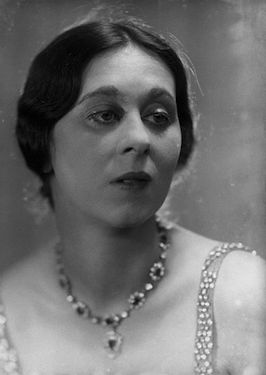
Dame Gwen Lucy Ffrangcon-Davies, was a British actress who worked mainly in theatre and television, as well as radio and film. She made her last acting appearance as a centenarian in 1991.
Events from the 1430s in England.

An Expert in Murder is a historical crime novel by Nicola Upson, published on March 6, 2008.
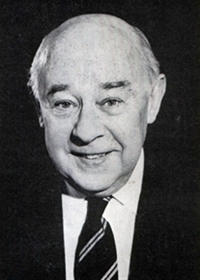
George Winchester Howe was an English actor who played numerous stage roles, was a frequent broadcaster on radio and television and appeared in four feature films.
Alice Neville, Baroness FitzHugh or Lady Alice FitzHugh, was the wife of Henry FitzHugh, 5th Baron FitzHugh. She is best known for being the great-grandmother of queen consort Catherine Parr and her siblings, Anne and William, as well as one of the sisters of Warwick the 'Kingmaker'. Her family was one of the oldest and most powerful families of the North. They had a long-standing tradition of military service and a reputation for seeking power at the cost of the loyalty to the crown as was demonstrated by her brother, the Earl of Warwick.

An Age of Kings is a fifteen-part serial adaptation of the eight sequential history plays of William Shakespeare, produced and broadcast in Britain by the BBC in 1960. The United States broadcast of the series the following year was hosted by University of Southern California professor Frank Baxter, who provided an introduction for each episode specifically tailored for the American audience. At the time, the show was the most ambitious Shakespearean television adaptation ever made, and was a critical and commercial success in both the UK and the US. Performed live, all episodes were telerecorded during their original broadcast.

A Shilling for Candles is a 1936 mystery novel by Josephine Tey about the investigation of the drowning of a film actress, known as Christine Clay. It is the second of Tey's five mysteries featuring Inspector Alan Grant, and the first book written under the Josephine Tey pseudonym. The plot draws extensively on Tey's experience in working with actors in her play Richard of Bordeaux, which was produced in London's West End in 1933 starring John Gielgud and Gwen Ffrangcon-Davies, and on her work as a contract writer in Hollywood.
